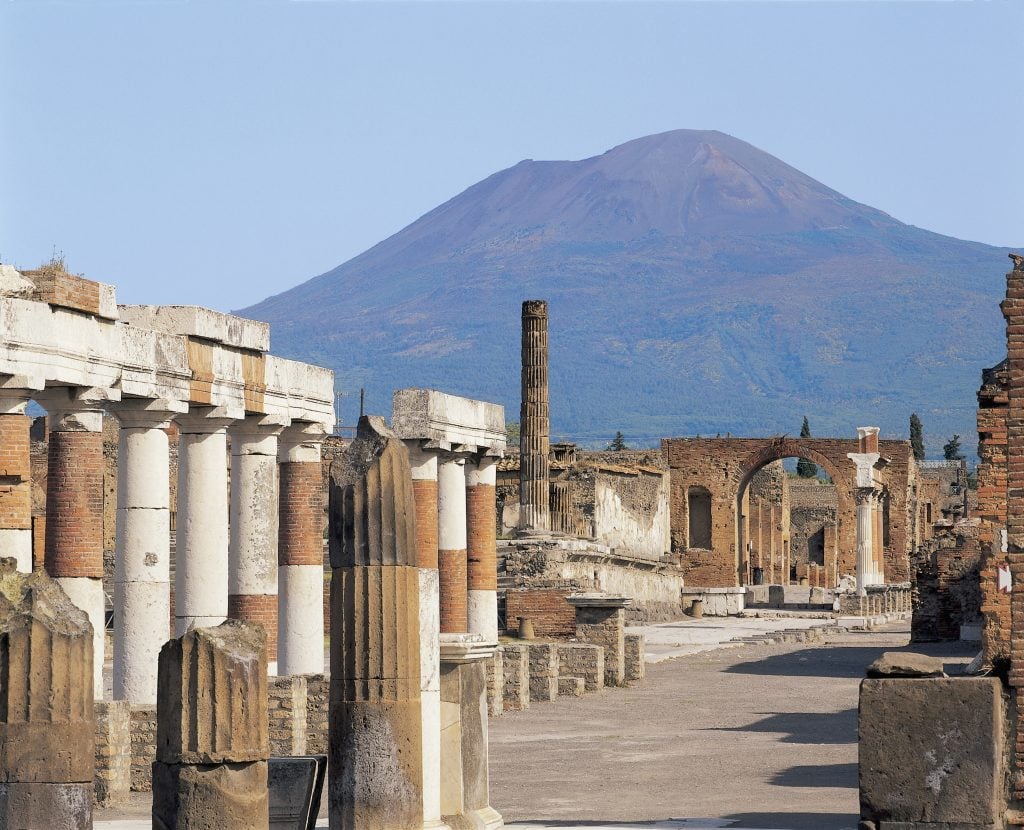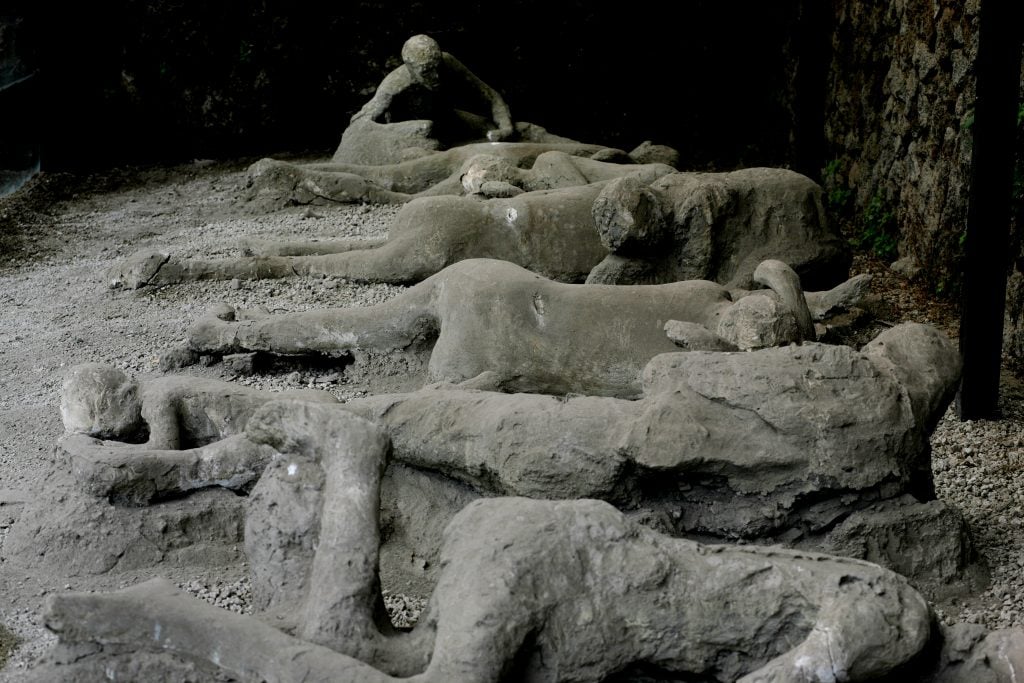Art World
New Findings in Pompeii Reveal Skeletons of Young Vesuvius Victims
The remains included gold coins and the skeleton of a young child.

The remains included gold coins and the skeleton of a young child.

Carol Civre

The Unesco World Heritage site Pompeii continues to shock experts, as Italian and French archaeologists have discovered new skeletons of young victims from Mount Vesuvius’ deadly eruption in 79AD, as well as a variety of other artifacts from the period, the Daily Mail reports.
The eruption wreaked havoc on the surrounding town of Pompeii in the Italian region of Campania. The disastrous event, which lasted for about 24 hours, resulted in a death toll of over 10,000, burying Pompeii’s citizens in an avalanche of hot ash, rock, and poisonous gas.
This past week the land of Pompeii has gifted new subjects to study to the researchers at the Porta Ercolano della Sopraintendenza di Pompeii with l’Ecole Francaise de Rome. Director of the organization Massimo Osanna presented the discoveries at a press conference, discussing their importance in Pompeii’s historical context.

Plaster casts of victims, at Garden of the Fugitives in Pompeii, Italy. Photo by Martin Godwin/Getty Images.
The first discovery revealed five skeletons of young citizens, of which one seems to belong to a child, escaping from the eruption in the remains of an ancient artisanal workshops. Director of the excavation Claude Pouzadoux explained that the victims were most likely seeking refuge inside the shop, but became trapped and perished. The excavation site suggests tampering of the bones, most likely by the clandestine excavations of ‘700 and ‘800, which drew robbers to Pompeii in hopes of retrieving valuables from the remains. While the archeologists might require some time to reconstruct the bones of the deceased due to the lootings, three gold coin as well as a gold flower ornament seem to have escaped the eyes of the burglars.
Other artifacts found in the area include different shaped vases, a long-necked amphora, and an urceus—a container for “galium,” a traditional delicacy consisting of salted anchovies, which is still produced by fishermen in the Amalfi Coast. A hoe was also found at the site, which might have been used by the victims in an attempt to dig their way out of the ashes, or by the burglars to search for valuables.
Only a few meters away from these findings, the team also uncovered another body which was buried in a traditional-style tomb adorned with male funerary dress and black-painted vases.
The new discoveries mark Pompeii as a continuous reserve of archeological surprises but also raise questions about the organization, management, and evolution of the relationship between the funerary and commercial spaces of the region, according to Campania Notizie.
Pompeii, with its rich land and even richer history, remains one of the most sought-after sights for archeological research and continues to attract more than 2.5 million tourists each year. While many of the archeological discoveries found in the area connect to Mount Vesuvius’ eruption in 79 AD, the most recent eruption occurred in 1944. No major activity has been reported since then but the volcano stands as a sleeping giant, still posing a possible threat to cities surrounding it—most notably the major Italian city of Naples.